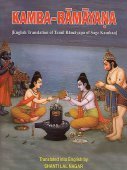Desha, Desa, Deśa, Deśā: 36 definitions
Introduction:
Desha means something in Buddhism, Pali, Hinduism, Sanskrit, Jainism, Prakrit, the history of ancient India, Marathi, Hindi. If you want to know the exact meaning, history, etymology or English translation of this term then check out the descriptions on this page. Add your comment or reference to a book if you want to contribute to this summary article.
The Sanskrit terms Deśa and Deśā can be transliterated into English as Desa or Desha, using the IAST transliteration scheme (?).
Alternative spellings of this word include Desh.
Images (photo gallery)
In Hinduism
Ayurveda (science of life)
Nighantu (Synonyms and Characteristics of Drugs and technical terms)
Source: Wisdom Library: Raj NighantuDeśa (देश) refers to “land” or “region”, as defined in the first chapter (ānūpādi-varga) of the 13th-century Raj Nighantu or Rājanighaṇṭu (an Ayurvedic encyclopedia).
Accordingly, three classifications of land are defined:
- anūpa-deśa (wet land),
- jāṅgala-deśa (dry land),
- sādhāraṇa-deśa (mixed land).
Unclassified Ayurveda definitions
Source: Google Books: Essentials of AyurvedaDeśa (देश, “habitat”):—Geographically the places of habitat can be divided into six zones according to predominance of bhūtas—
- Jāṅgala (‘forest’, has a predominance of vāta),
- Sāmudra (‘oceanic’, has a predominance of kapha and pitta),
- Saikata (‘arid zone’, has a predominance of vāta and pitta),
- Pārvatya (‘hilly’, has a predominance of vāta and kapha),
- Ānupa (‘sub-aquatic’, has a predominance of kapha)
- and Madhya (‘central zone’, average distribution of vāta, kapha and pitta)
One should keep in mind the nature of the particular habitat while prescribing the diet.
Source: gurumukhi.ru: Ayurveda glossary of terms1) Deśa (देश):—Habitat, the place or environment where a plant or animal naturally or normally lives and grows
2) It implies to body or body part or geographical area

Āyurveda (आयुर्वेद, ayurveda) is a branch of Indian science dealing with medicine, herbalism, taxology, anatomy, surgery, alchemy and related topics. Traditional practice of Āyurveda in ancient India dates back to at least the first millenium BC. Literature is commonly written in Sanskrit using various poetic metres.
Dharmashastra (religious law)
Source: Wisdom Library: Dharma-śāstraDeśa (देश) refers to “a district” (a group of villages). The word is used throughout Dharmaśāstra literature such as the Manusmṛti. (See the Manubhāṣya, verse 8.219)
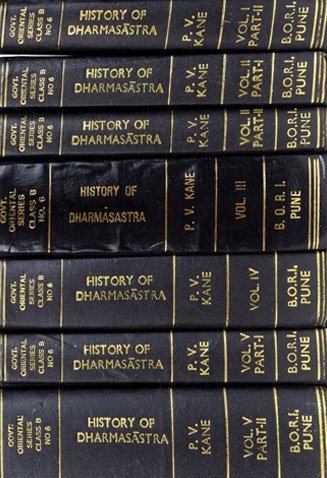
Dharmashastra (धर्मशास्त्र, dharmaśāstra) contains the instructions (shastra) regarding religious conduct of livelihood (dharma), ceremonies, jurisprudence (study of law) and more. It is categorized as smriti, an important and authoritative selection of books dealing with the Hindu lifestyle.
Purana and Itihasa (epic history)
Source: Cologne Digital Sanskrit Dictionaries: The Purana IndexDeśā (देशा).—Regions different from Rāṣṭras and Janapadas.*
- * Brahmāṇḍa-purāṇa III. 50. 6.

The Purana (पुराण, purāṇas) refers to Sanskrit literature preserving ancient India’s vast cultural history, including historical legends, religious ceremonies, various arts and sciences. The eighteen mahapuranas total over 400,000 shlokas (metrical couplets) and date to at least several centuries BCE.
Mīmāṃsā (school of philosophy)
Source: Srimatham: Mīmāṃsa: The Study of Hindu ExegesisDeśa (देश, “place”) refers to one of the six factors through which positive ethical precepts (regarding Dharma) are conditioned. The discerning student is required to distinguish between grades of vidhi or to compare their levels of authority or applicability. The primary distinction is derived from their motivation and goals, thus producing the concepts of puruṣārtha and kratvārtha.
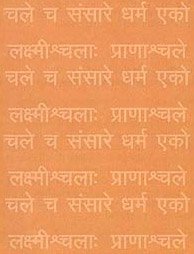
Mimamsa (मीमांसा, mīmāṃsā) refers to one of the six orthodox Hindu schools of philosophy, emphasizing the nature of dharma and the philosophy of language. The literature in this school is also known for its in-depth study of ritual actions and social duties.
Vyakarana (Sanskrit grammar)
Source: Wikisource: A dictionary of Sanskrit grammarDeśa (देश).—lit. place; (l) original place of articulation: cf. अदेशे वा वचनं व्यञ्ज-नस्य (adeśe vā vacanaṃ vyañja-nasya), R. Pr. XIV. 5; (2) place of origin; उच्चारणस्थानः (uccāraṇasthānaḥ) (3) place of inferential establishment of a Paribhasa etc. परिभाषादेशः उद्देशः (paribhāṣādeśaḥ uddeśaḥ) Par. Sek. pari. 2,3; (4) passage of the Samhita text, cf..T. Pr. I. 59.
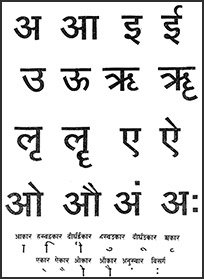
Vyakarana (व्याकरण, vyākaraṇa) refers to Sanskrit grammar and represents one of the six additional sciences (vedanga) to be studied along with the Vedas. Vyakarana concerns itself with the rules of Sanskrit grammar and linguistic analysis in order to establish the correct context of words and sentences.
Vastushastra (architecture)
Source: OpenEdition books: Architectural terms contained in Ajitāgama and RauravāgamaDeśa (देश) refers to “site § 2.18.”.—(For paragraphs cf. Les enseignements architecturaux de l'Ajitāgama et du Rauravāgama by Bruno Dagens)
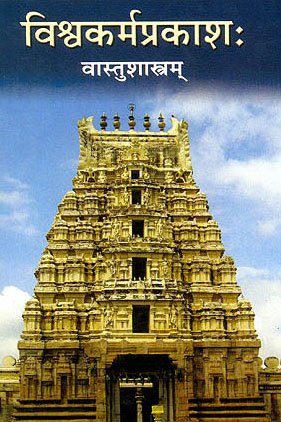
Vastushastra (वास्तुशास्त्र, vāstuśāstra) refers to the ancient Indian science (shastra) of architecture (vastu), dealing with topics such architecture, sculpture, town-building, fort building and various other constructions. Vastu also deals with the philosophy of the architectural relation with the cosmic universe.
Yoga (school of philosophy)
Source: ORA: Amanaska (king of all yogas): A Critical Edition and Annotated Translation by Jason BirchDeśa (देश) refers to “one’s region”, according to the Sarvajñānottara verse 20.34-39.—Accordingly, while discussing the culmination of detachment (for the process of attaining the no-mind state): “Having abandoned those feelings connected with his region (deśa), caste, his caste-class and religious disciplines, the wise should meditate on his own [inner] state. Abandoning all such feelings as ‘this is [my] mantra’, ‘this is [my] deity’, ‘this is [my] meditation’ [or] ‘this is [my] austerity’, he should meditate on his own [inner] state. [...]”.

Yoga is originally considered a branch of Hindu philosophy (astika), but both ancient and modern Yoga combine the physical, mental and spiritual. Yoga teaches various physical techniques also known as āsanas (postures), used for various purposes (eg., meditation, contemplation, relaxation).
General definition (in Hinduism)
Source: archive.org: Vedic index of Names and SubjectsDeśa (देश, ‘land’) is a word that does not come into use till the time of the Upaniṣads and Sūtras, excepting one occurrence in the latest period of the Brāhmaṇa literature, and one in a much-discussed passage of the Vājasaneyi Saṃhitā, where the Sarasvatī is mentioned as having five tributaries. This passage militates against the view that Sarasvatī was a name of the Indus, because the use of Deśa here seems to indicate that the seer of the verse placed the Sarasvatī in the Madhyadeśa or ‘Middle Country’, to which all the geographical data of the Yajurvedas point.
In Buddhism
Theravada (major branch of Buddhism)
Source: Dhamma Dana: Pali English GlossaryM (Spot). Place, region. / motive (subject that is being dealt with).
Theravāda is a major branch of Buddhism having the the Pali canon (tipitaka) as their canonical literature, which includes the vinaya-pitaka (monastic rules), the sutta-pitaka (Buddhist sermons) and the abhidhamma-pitaka (philosophy and psychology).
Tibetan Buddhism (Vajrayana or tantric Buddhism)
Source: Google Books: VajrayoginiDeśa (देश).—This is a set of ten “places” (deśa) made up of five primary places, and five secondary or “nearby” places. Each of the places contains two or four of the twenty-four sacred sites (Vajravārāhī-sādhana 43-53). The places during the course of the body maṇḍala with the ten bodhisattva stages. In the semi-mythical world of the highest tantras, the places and sites serve as dwelling places for various classes of yoginī.
The ten places (deśa):
- pīṭha (site),
- kṣetra (field),
- chandoha,
- melāpaka (meeting place),
- śmaśāna (cremation ground),
- upapīṭha (nearby site),
- upakṣetra (nearby field),
- upacchandoha,
- upamelāpaka (nearby meeting place),
- upaśmaśāna (nearby cremation ground)
Deśa (देश) or Kṣetra refers to “sacred districts”.—The Vajraḍākatantra deals with three types of sacred districts (deśa or kṣetra) or seats (sthāna) of deities:—Type (1): Internal twenty-four seats divided into pīṭhādi and tricakra; Type (2): Twenty-four districts divided into twelve groups or six families; Type (3): Another group of twenty-four districts.

Tibetan Buddhism includes schools such as Nyingma, Kadampa, Kagyu and Gelug. Their primary canon of literature is divided in two broad categories: The Kangyur, which consists of Buddha’s words, and the Tengyur, which includes commentaries from various sources. Esotericism and tantra techniques (vajrayāna) are collected indepently.
In Jainism
General definition (in Jainism)
Source: The University of Sydney: A study of the Twelve ReflectionsDeśa (देश) refers to a “good country”, according to Pūjyapāda’s Sarvārthasiddhi.—Accordingly, “[...] Even if human birth is attained, a good country (deśa), a good family, keen senses, health, etc. are more and more difficult of attainment. When all these are attained, if true faith is not acquired, human birth becomes useless like the face without vision. And even after attaining this rare true faith, if anyone is immersed in worldly pleasures, it is like burning sandal-wood paste for the sake of ash. [...]”.

Jainism is an Indian religion of Dharma whose doctrine revolves around harmlessness (ahimsa) towards every living being. The two major branches (Digambara and Svetambara) of Jainism stimulate self-control (or, shramana, ‘self-reliance’) and spiritual development through a path of peace for the soul to progess to the ultimate goal.
India history and geography
Source: archive.org: Personal and geographical names in the Gupta inscriptionsDeśa (देश) refers to a name-ending for place-names mentioned in the Gupta inscriptions (reigned from 3rd century CE). Deśa means a “province”, “country”, “kingdom”. Sometimes it is used as a technical territorial term. But its exact meaning and bearing are difficult to explain due to the fact that sometimes it is described as bigger and at others smaller than other geographical divisions, such as maṇḍala, rāṣṭra and viṣaya. We find only one reference each in the Brāhmaṇas and the Vājasaneyī-saṃhitā. The passage in the Vājasaneyī-saṃhitā is significant in as much as here for the first time, deśa is used in the sense of a ‘country’. We find a reference to the river Sarasvatī as flowing in the Madhyadeśa or “Middle Country”. The term was much in vogue in the Upaniṣad and Sūtra period denoting therein the meaning ‘land’.
Source: Early History Of The Deccan Pts.1 To 6: Principal Administrative Divisions from the Rise of the SātavāhanasDeśa (देश) refers to an “administrative designation”.—In the time of the Chālukyas of Vātāpi and Veṅgī, and the Rāṣṭrakūṭas of Mānyakheṭa, three designations largely held the field—deśa, maṇḍala, and viṣaya. The term viṣaya occurs most frequently. The antiquity of the word deśa goes back to the days of the Vājasaneyi-saṃhitā of the Yajurveda. But its occurrence in the early Vedic texts is very rare. It is more common in the Buddhist texts where it is sometimes used as a synonym of janapada. It is clear that deśa had become the designation of an administrative unit possibly as early as the time of Aśoka, and certainly in the early Pallava age. In the post-Pallava period deśa is at times used as a bigger unit than a viṣaya.
Source: What is India: Inscriptions of the ŚilāhārasDeśa was the largest administrative unit under the rule of the Śilāhāra dynasty (r. 765-1029 A.D.).—Koṅkana, which comprised several deśas was called Mahā-deśa. The deśas were previously divided into rāṣṭras. The deśas were divided into viṣayas in North and south Koṅkaṇ. Several viṣayas are mentioned in the records of the Śilāhāras. Deśas, viṣaya and khollas are sometimes named together with the numbers of the villages comprised in them.
Source: Shodhganga: A study of place names of Nalgonda districtDesa is one of the terms designating an ‘administrative division’ used in the inscriptions of Andhra Pradesh.—This is a territorial term denoting a small area or a group of villages in some cases, but a kingdom, district, tract or country in others. As a territorial appellation it occurs in the inscriptions of almost all over India. In Andhra Prdesh sthe earliest available reference to desa as a territorial unit is Velpurudesa mentioned in the Velpuru pillar inscription of the Vishnukundi king Madhavavarman II.
Sometimes the desa denotes entire country, viz., Kalinga-desa, Andhra-desa, etc. It was also synonymous with vishaya and nadu. For instance, Kalinga-desa and Palli-desa were also known as Kalinga-Vishaya and Palli-nadu respectively. Desa appellation is found throughout Andhra Pradesh. Being a Sandkrit appellation its provenance is more in the North
Source: Cologne Digital Sanskrit Dictionaries: Indian Epigraphical GlossaryDeśa.—(IE 8-4; CII 3, 4), a territorial term meaning a small area or a group of villages in some cases but a kingdom, district, tract or country in others. (IE 8-4), a country of which there were seventytwo in Bhārata or Bhāratavarṣa. (CII 1), a part of anything. (EI 24), a synonym of āspada. (ASLV), a school of music. Cf. Kona-deśa (EI 32), also called a maṇdala, rāṣṭra, sīma, sthala, etc. Cf. deśa-bhāṣā (EI 17), ‘vernacular of a province’. Cf. teśa-kālam (SITI), locality and time; also teśa-vāḻi, officer in charge of a village or district. Note: deśa is defined in the “Indian epigraphical glossary” as it can be found on ancient inscriptions commonly written in Sanskrit, Prakrit or Dravidian languages.

The history of India traces the identification of countries, villages, towns and other regions of India, as well as mythology, zoology, royal dynasties, rulers, tribes, local festivities and traditions and regional languages. Ancient India enjoyed religious freedom and encourages the path of Dharma, a concept common to Buddhism, Hinduism, and Jainism.
Languages of India and abroad
Pali-English dictionary
Source: BuddhaSasana: Concise Pali-English Dictionarydesa : (m.) region; country; a district.
Source: Sutta: The Pali Text Society's Pali-English DictionaryDesa, (Ved. deśa, cp. disā) point, part, place, region, spot, country, Vin.I, 46; II, 211; M.I, 437; J.I, 308; DhsA.307 (°bhūta); PvA.78 (°antara prob. to be read dos°), 153; KhA 132, 227.—desaṃ karoti to go abroad J.V, 340 (p. 342 has disaṃ).—kañcid-eva desaṃ pucchati to ask a little point D.I, 51; M.I, 229; A.V, 39, sometimes as kiñcid-eva d. p. S.III, 101; M.III, 15; v. l. at D.I, 51.—desāgata pañha a question propounded, lit. come into the region of some one or having become a point of discussion Miln.262. (Page 330)

Pali is the language of the Tipiṭaka, which is the sacred canon of Theravāda Buddhism and contains much of the Buddha’s speech. Closeley related to Sanskrit, both languages are used interchangeably between religions.
Marathi-English dictionary
Source: DDSA: The Molesworth Marathi and English Dictionarydēśa (देश).—m (S) A country, a tract, a region. Pr. dēśāsārakhā vēṣa. 2 A place; a spot. Ex. vṛkṣācē mūladēśīṃ sēcana kēlēṃ mhaṇajē agradēśīṃ hī ṭavaṭavī yētī. 3 Place, the suitable place. Ex. dēśa kāla pāhūna kāma karāvēṃ. 4 The middle country, the country bounded by the Sayhadri range, the Balaghaṭ hills, the Carnatic, and the Godavari river. 5 Space. 6 Under this word may be gathered, and exhibited in their gradations, the words dēśa, prānta, subhā, para- gaṇā, tālukā, jilhā, mahāla, kasabā, pēṭā, puṭhā, maujā, sammata, tarapha. dēśa & prānta are the most comprehensive, expressing COUNTRY in the largest sense; as mahārāṣṭradēśa, gujarāthadēśa, karanāṭakadēśa, cīnadēśa; also any DIVISION OF A COUNTRY; as puṇēdēśa, vāīdēśa, mirajadēśa; also mahārāṣṭraprānta, gujarāthaprānta, & puṇēprānta, vāīprānta &c. subhā is well known as a Subha or Province. paragaṇā, tālukā, jilhā differ but little, expressing generally Division of a dēśa or prānta, a shire, a county, a district: in some parts one word is common, in others, another, and, amongst ourselves, we have long had the words Pergunnah and Zilla. mahāla & pēṭā A subdivision of a tālukā or paragaṇā, a canton, circuit, hundred; a tract and villages having a kasabā or large town at the head. puṭhā Any collection of villages. maujā A village. sammata & tarapha A small division of a para- gaṇā or tract; a small collection of villages. With some the order of these terms is understood to be khātēṃ (Department or division), dēśa or prānta, subhā, jilhā (or jilhā, subhā), tālukā, pēṭā, mahāla or ṭappā or paragaṇā, tarapha, kasabā, maujā, majarā, mujarī. dēśa ghēṇēṃ or āpalā dēśa ghēṇēṃ To take one's proper place--to mind one's own business; as tū āpalā dēśa ghē You go to Bath. dēśācā pāṭāvaravaṇṭā hōṇēṃ To be laid flat and bare; to be utterly devastated--a country. dēśīṃ jāṇēṃ To return to one's native country.
--- OR ---
dēsa (देस).—m (dēśa S through H) A country, region, tract. 2 A Rag or mode of music. See rāga.
Source: DDSA: The Aryabhusan school dictionary, Marathi-Englishdēśa (देश).—m A country; a place. The region above the Ghauts.
Marathi is an Indo-European language having over 70 million native speakers people in (predominantly) Maharashtra India. Marathi, like many other Indo-Aryan languages, evolved from early forms of Prakrit, which itself is a subset of Sanskrit, one of the most ancient languages of the world.
Sanskrit dictionary
Source: DDSA: The practical Sanskrit-English dictionaryDeśa (देश).—[diś-ac]
1) A place or spot in general; देशः को नु जलावसेकशिथिलः (deśaḥ ko nu jalāvasekaśithilaḥ) Mṛcchakaṭika 3.12 (often used after words like kapola, skandha, aṃsa, nitamba &c., without any meaning; skandhadeśe Ś.1.19 'on the shoulder').
2) A region, country, province, land, territory; यं देशं श्रयते तमेव कुरुते बाहुप्रतापार्जितम् (yaṃ deśaṃ śrayate tameva kurute bāhupratāpārjitam) H.1.15.
3) A department, part, side, portion (as of a whole); as in एकदेश, एकदेशीय (ekadeśa, ekadeśīya) q. v.
4) An institute, an ordinance.
5) Range, compass; दृष्टिदेशः (dṛṣṭideśaḥ) Pañcatantra (Bombay) 2.
Derivable forms: deśaḥ (देशः).
Source: Cologne Digital Sanskrit Dictionaries: Edgerton Buddhist Hybrid Sanskrit DictionaryDeśa (देश).—nt. (otherwise m.), part (here, of the body; not common in Sanskrit, but see śarīradeśebhyaḥ BṛhU 4.4.3; common in AMg., see [Ardha-Māgadhī Dictionary] s.v. desa 5): na ca te 'ntarā kāyu kadāci cālito, na hasta-pādaṃ no pi cānya deśam Saddharmapuṇḍarīka 161.9 (verse; mss., except Kashgar recension grīva for deśa; KN em. cānyad-aṅgam, kept by WT without note), and your body never moved, not your hands or feet, nor any other part.
Source: Cologne Digital Sanskrit Dictionaries: Shabda-Sagara Sanskrit-English DictionaryDeśa (देश).—m.
(-śaḥ) 1. A country, a region, whether inhabited or uninhabited. 2. A part, a portion. 3. Institute, ordinance. E. diś to point, to show, affix ghañ .
Source: Cologne Digital Sanskrit Dictionaries: Benfey Sanskrit-English DictionaryDeśa (देश).—i. e. diś + a, m. 1. A place, [Mānavadharmaśāstra] 2, 222. 2. A part, a side, [Kathāsaritsāgara, (ed. Brockhaus.)] 18, 280. 3. A country, [Rāmāyaṇa] 1, 61, 10. 4. When latter part of comp. words, often without a special signification, e. g. kaṇṭha-deśa = kaṇṭha, [Kathāsaritsāgara, (ed. Brockhaus.)] 17, 81; nitamba-, [Ṛtusaṃhāra] 1, 6; [Rāmāyaṇa] 1, 55, 3. Comp. A-, m. 1. an improper place, [Hitopadeśa] iv. [distich] 45. 2. a place which ought not to be touched, [Mānavadharmaśāstra] 8, 358. Eka-, m. 1. one place, [Pañcatantra] 21, 13. 2. one part, [Mānavadharmaśāstra] 2, 141. Tanū-, m. a part of the body, [Bhāgavata-Purāṇa, (ed. Burnouf.)] 7, 13, 12. Diś-, pl. a country in this or that direction, distant countries, [Hitopadeśa] 9, 4; cf. [Rājataraṅgiṇī] 4, 417. Para-, m. a foreign country. Pūrva-, m. the eastern country, Mahābhārata 2, 1856. Madhya-, m. the middle region, a part of India, [Mānavadharmaśāstra] 2, 21. Vi-, m. 1. a foreign country, abroad. 2. any place away from home. Sa-, adj. 1. near. 2. of the same country or place.
Source: Cologne Digital Sanskrit Dictionaries: Cappeller Sanskrit-English DictionaryDeśa (देश).—[masculine] place, spot, region, country; deśe in the right place ([often] [with] kāle q.v.). —[feminine] deśī language of the country, vulgar speech, provincialism.
Source: Cologne Digital Sanskrit Dictionaries: Monier-Williams Sanskrit-English Dictionary1) Deśa (देश):—m. (√1. diś) point, region, spot, place, part, portion, [Vājasaneyi-saṃhitā; Aitareya-brāhmaṇa; ???] & [Gṛhya-sūtra; Manu-smṛti] etc.
2) province, country, kingdom, [Rāmāyaṇa; Hitopadeśa; Kathāsaritsāgara; Vetāla-pañcaviṃśatikā]
3) institute, ordinance, [Horace H. Wilson] (deśam ā √vas, or ni-√viś, to settle in a place, [Manu-smṛti]; śe, in the proper place [especially] with kāle [Mahābhārata; Hitopadeśa] Often ifc. [f(ā). , [Raghuvaṃśa vii, 47; Ṛtusaṃhāra i, 27]] [especially] after a word denoting a country or a part of the body e.g. kāmboja-,magadha-; aṃsa-,kaṇṭha-,skandha-; ātmīya-, one’s own country or home)
Source: Cologne Digital Sanskrit Dictionaries: Yates Sanskrit-English DictionaryDeśa (देश):—(śaḥ) 1. m. A country, a region. n. A portion; an institute.
Source: DDSA: Paia-sadda-mahannavo; a comprehensive Prakrit Hindi dictionary (S)Deśa (देश) in the Sanskrit language is related to the Prakrit word: Desa.
[Sanskrit to German]
Sanskrit, also spelled संस्कृतम् (saṃskṛtam), is an ancient language of India commonly seen as the grandmother of the Indo-European language family (even English!). Closely allied with Prakrit and Pali, Sanskrit is more exhaustive in both grammar and terms and has the most extensive collection of literature in the world, greatly surpassing its sister-languages Greek and Latin.
Hindi dictionary
Source: DDSA: A practical Hindi-English dictionary1) Deśa (देश) [Also spelled desh]:—(nm) a country; land; native home; region; space; —[kāla] time and space; native land (as [deśakāla kā samācāra sunāo); 0 doṣa] anachronism; ~[ja] native; local; a word evolved indigenously, indigenous; -[darśana] seeing the land/country; -[deśāṃtara] one’s own and other lands; -[doṣa] anachronism;—[dharma] religion/morals/conduct befitting or prevailing in a country; ~[bhakta] a patriot; ~[bhakti] patriotism; •[pūrṇa] patriotic; ~[bhakti-bhāva] patriotic sentiment; —[bhāṣā] native language, language current in a country; -[videśa] native and alien lands.
2) Desa (देस):—(nm) see [deśa; ~vāla] co-native, co-patriot.
...
Prakrit-English dictionary
Source: DDSA: Paia-sadda-mahannavo; a comprehensive Prakrit Hindi dictionary1) Desa (देस) in the Prakrit language is related to the Sanskrit word: Deśa.
2) Desa (देस) also relates to the Sanskrit word: Deśa.
3) Desa (देस) also relates to the Sanskrit word: Deśa.
Prakrit is an ancient language closely associated with both Pali and Sanskrit. Jain literature is often composed in this language or sub-dialects, such as the Agamas and their commentaries which are written in Ardhamagadhi and Maharashtri Prakrit. The earliest extant texts can be dated to as early as the 4th century BCE although core portions might be older.
Kannada-English dictionary
Source: Alar: Kannada-English corpusDēśa (ದೇಶ):—
1) [noun] a particular portion of space on the surface of the earth, whether of definite or of indefinite extent; an area of land; region.
2) [noun] the whole land or territory of a nation or state; country.
3) [noun] the space between two objects.
--- OR ---
Dēsa (ದೇಸ):—[noun] the whole land or territory of a nation or state; country.
Kannada is a Dravidian language (as opposed to the Indo-European language family) mainly spoken in the southwestern region of India.
See also (Relevant definitions)
Starts with (+166): Desaka, Desana, Desata, Desha-maryad-aruvana-anvila, Desha-rita, Desha-talara, Desha-thakkura, Deshabadami, Deshabadamitte, Deshabamdha, Deshabamdhava, Deshabha, Deshabhakta, Deshabhakte, Deshabhakti, Deshabhamduva, Deshabhanga, Deshabhasha, Deshabhashajnana, Deshabhashantara.
Ends with (+554): Abhidesha, Abhitodevayajanamatradesha, Abhyasadesha, Adesa, Adesha-upadesha, Adhidesha, Adhodesha, Adhyadesha, Adhyatmavidyopadesha, Adidesha, Agradesha, Akashadesha, Akashapradesha, Akshayabuddhavamshanirdesha, Akshayamatinirdesha, Akshnayadesha, Allaladesha, Amarasamdesha, Amdesha, Amritakundalyutpattinirdesha.
Full-text (+1119): Pratidesham, Desharupa, Deshatithi, Ekadesha, Deshadharma, Digdesha, Deshantarin, Videsa, Marudesha, Deshapeksha, Deshantara, Purvadesha, Deshavyavahara, Adeshakala, Deshaja, Antarvana, Yathadeshakaladehavasthanavishesham, Purbbadesha, Deshacyuti, Dravida.
Relevant text
Search found 127 books and stories containing Desha, Desa, Deśa, Deśā, Dēśa, Dēsa; (plurals include: Deshas, Desas, Deśas, Deśās, Dēśas, Dēsas). You can also click to the full overview containing English textual excerpts. Below are direct links for the most relevant articles:
Bhagavati-sutra (Viyaha-pannatti) (by K. C. Lalwani)
Part 3 - On the sky < [Chapter 10]
Part 4 - On the touch between molecules of matter < [Chapter 7]
Part 1 - On the throbbing of molecules < [Chapter 7]
Brihad Bhagavatamrita (commentary) (by Śrī Śrīmad Bhaktivedānta Nārāyana Gosvāmī Mahārāja)
Verse 2.4.247 < [Chapter 4 - Vaikuṇṭha (the spiritual world)]
Verse 2.1.219 < [Chapter 1 - Vairāgya (renunciation)]
Verse 1.5.1 < [Chapter 5 - Priya (the beloved devotees)]
Garga Samhita (English) (by Danavir Goswami)
Verse 1.13.20 < [Chapter 13 - The Liberation of Pūtanā]
Verse 3.8.8 < [Chapter 8 - The Opulences of Śrī Girirāja]
Verse 6.3.3 < [Chapter 3 - Lord Balarāma’s Wedding]
Chaitanya Bhagavata (by Bhumipati Dāsa)
Verse 1.2.44-45 < [Chapter 2 - The Lord’s Appearance]
Verse 1.14.49 < [Chapter 14 - The Lord’s Travel to East Bengal and the Disappearance of Lakṣmīpriyā]
Verse 1.14.86 < [Chapter 14 - The Lord’s Travel to East Bengal and the Disappearance of Lakṣmīpriyā]
Sahitya-kaumudi by Baladeva Vidyabhushana (by Gaurapada Dāsa)
Text 2.36 < [Chapter 2 - The Natures of Words (śabda)]
Text 8.30 < [Chapter 8 - Literary Qualities]
Text 3.3 < [Chapter 3 - Suggestiveness Based on a Specialty]
Kavyamimamsa of Rajasekhara (Study) (by Debabrata Barai)
Part 8 - Rājaśekhara’s divisions of Geographical regions and Seasons < [Chapter 5 - Analyasis and Interpretations of the Kāvyamīmāṃsā]
Part 9 - Deśa-vibhāga and Kāla-vibhāga < [Chapter 3 - Contribution of Rājaśekhara to Sanskrit Poetics]
Part 3 - Synthesis of Rīti, Vṛtti and Pravṛitti < [Chapter 3 - Contribution of Rājaśekhara to Sanskrit Poetics]
Related products

